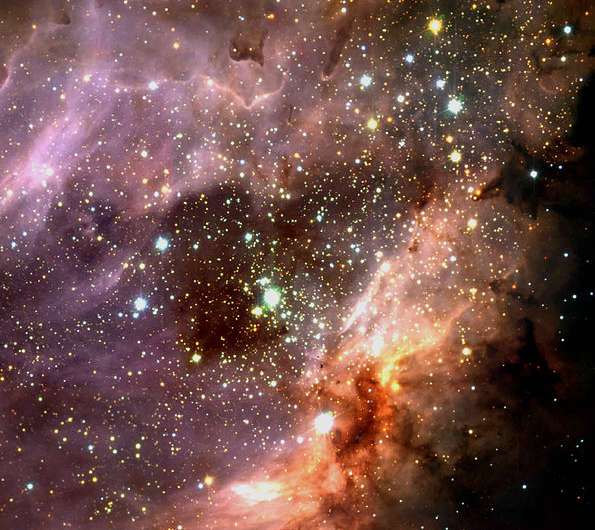An improved model for star formation

Star formation, once thought to consist essentially of just the simple coalescence of material by gravity, actually occurs in a complex series of stages. As the gas and dust in giant molecular clouds come together into stars, circumstellar disks develop (possibly pre-planetary in nature), and later on dramatic outflowing jets appear. Key to initiating the process is the behavior of the gas. Although it has a finite temperature and hence a finite outward pressure, the pressure must be insufficient to support the gas against gravitational collapse. The subsequent cloud evolution also depends on the detailed density structure of the gas with a variety of different outcomes being possible, for example, fragmentation into smaller clouds. A key relationship is that between the temperature and density within the medium, and, as a result, the way the cloud radiates as the initial cooling dominance of molecular gas is overtaken by cooling from its dust grains.
In the latest issue of Monthly Notices of the Royal Astronomical Society, CfA astronomer Eric Keto and his colleague present a new method for modelling the thermal evolution of star-forming molecular clouds. Their technique combines modeling both the temperature characteristics of the gas and dust and the propagation of radiation as it is produced by, and passes through, the medium. The method enables the prediction of the molecular cloud's evolution and also the growth of protostars. Unlike most previously published star formation calculations, the new model tracks the temperatures of the gas, dust, and radiation separately. The results are in good agreement with the accepted literature, providing confidence about the model's performance, but push the range of investigations as they probe the structures in the cloud cores and their turbulent behavior.
The scientists plan to apply their new model to more realistic computer simulations of star formation, particularly for molecular clouds with unusual conditions (for example very low densities or low abundances of complex elements). They note, however, that their model is far from complete; it relies on generic estimates rather than exact calculations for some processes, for example, the evolution of the chemistry in the cloud as the gas warms up. Future research, building on this important first step, will be able to incorporate these effects more accurately, and should lead to an even more complete understanding of the star formation process.
More information: "Combining Radiative Transfer and Diffuse Interstellar Medium Physics to Model Star Formation," MNRAS, 449, 2643, 2015. adsabs.harvard.edu.ezp-prod1.h … /2015MNRAS.449.2643B
Journal information: Monthly Notices of the Royal Astronomical Society
Provided by Harvard-Smithsonian Center for Astrophysics


















